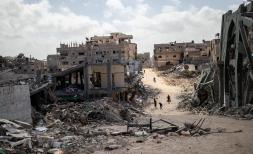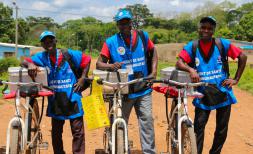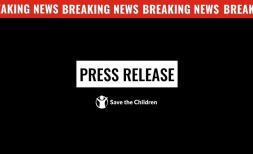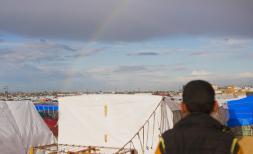One in four victims of trafficking and exploitation in Europe are children
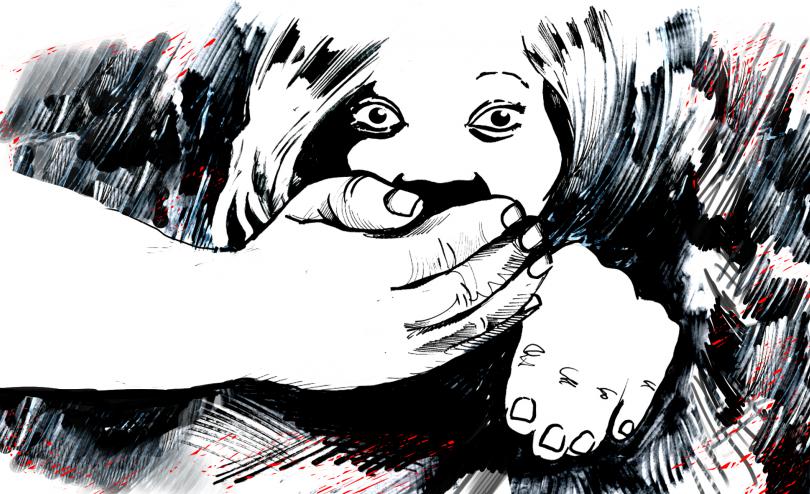
A quarter of suspected or identified trafficking victims in Europe are children and the main goal of human traffickers is sexual exploitation - a new report released by Save the Children finds. Out of 20,500 victims who were registered in the European Union in 2015-16, 56% of cases were related to trafficking for sexual exploitation, while 26% of cases were related to labour exploitation. One in four victims is under 18 and two out of three victims are women or girls.
The report finds that 1,660 victims of trafficking were estimated to be living in Italy, with the number of underage victims increasing in a year from 9% to 13%. The growing trend was also confirmed by the assessment of operators of Save the Children's Vie d’Uscita - Exit Routes project, which in 2018, in only five regions, have intercepted 2,210 victims of child trafficking who were either underage or just over the age of 18. This number grew by 58%, compared to 1,396 victims estimated in 2017.
Although this data represents only the surface of a mostly hidden issue, the increasingly younger age of the victims and the prevalence of sexual exploitation were also confirmed by 74 new cases of children in the country who managed to get out of the exploitation system in 2018, and are currently looked after by institutional protection programs. One in five victims do not exceed the age of 15 and sexual exploitation affects almost 9 out of 10 cases.
Although it is not the main objective of the trafficking system, labour exploitation in Italy is growing and in 2018 the number of offences involving minor victims, both Italian and foreign children, were 263.
Just days before the World Day against Trafficking in Persons on July 30th, Save the Children Italy is releasing the 13th edition of this report, an updated overview on the trafficking and exploitation system of minors in Italy, and in particular on the system of sexual exploitation and the specific vulnerability of its victims, who are largely foreign-born.
According to the assessment of Save the Children’s Vie d’Uscita – Exit Routes project, the girls who are most exposed to trafficking by criminal organisations and networks, come from Nigeria, Eastern Europe and the Balkans. More specifically, 64% of victims are from Nigeria, and 34% from Romania, Bulgaria and Albania.
“The sexual exploitation of such young and vulnerable victims leaves an indelible mark on their lives, with very serious consequences. Even those very young victims who manage to escape the system, are met with several obstacles on their path towards inclusion and a dignified and autonomous future. There are many direct testimonies featured in the report.
“In Italy Save the Children has worked in this area for years, with the aim of building stronger relationships and collaboration with local organizations and associations, and with institutions at every level. An issue of such severity and proportions requires a coordinated national intervention among all actors, which must start in a timely manner as soon as potential victims enter our country, and must also provide the necessary and effective means to promote the rescue of victims and their path to integration," said Raffaela Milano, Director of Save the Children's Italy Domestic Programmes.
To raise awareness and bring everyone closer to the drama of sexual exploitation linked to trafficking in a simple and engaging way, the report this year includes the graphic novel "Sophia’s story. A victim of trafficking. A girl", illustrated by cartoonist Roberto Cavone. The novel tells the true story of a Nigerian teenager and can be a valuable tool to raise awareness in schools.
Sexual exploitation of Nigerian girls and Eastern European countries
The business of international trafficking for the purpose of sexual exploitation in Italy is based on a dynamic system, which adapts to changing conditions. For example, the issue of very young children from Southern Nigeria, where conditions of poverty and inadequate access to schools prevail, being lured to Italy with the false promise of a job only to end up in the hands of traffickers, used to be widespread in Benin City, in the Edo State, but now seems to have moved further south into the Delta State.
The move aimed at circumventing the effects of a decree by the highest religious authority of the Edo people. In 2018 Ewmare II had publicly declared void the rite known as juju, used by traffickers to blackmail young victims to subjugate them. Unfortunately, the decree’s success in disrupting the entire criminal network was only temporary.
The Nigerian girls and women who arrive in Italy after a journey through Libya and by sea, where they are subjected to abuse and violence, are then indebted to the “maman”, the female figure who manages their exploitation. These travel debts can reach 30,000 euros. Girls can be forced to "work" up to 12 hours every night, , collecting from 300 to 700 euros per day. A large part of the money, however, is used to pay for food, accommodation and clothes, and often also to rent the spot in the street where they are forced into prostitution, which makes the extinction of their debt almost unattainable.
The traffickers exercise an absolute and violent control over their victims, as in the case of Sophia, who was almost suffocated by her “maman” for asking a client for his phone to call her mother in Nigeria and ask for help.
In addition, smugglers have moved the prostitution circuit away from places that are more easily identifiable, such as lay-bys along minor roads or major road arteries, to "less visible" places, the so-called round walk, such as bus stops or parks, or inside houses, which in some cases are connection-houses managed and attended mainly by compatriots.
On Italy’s streets, however, the presence of girls of Romanian or Bulgarian origin has remained constant, with an increase in the number of girls of Albanian origin. The recruitment of victims in their origin countries takes place with increasingly effective methods, such as in Romania, where the testimonies collected for the report found several cases where the watchmen of the traffickers identify in advance, in the orphanages, the girls who are about to leave the facilities at the age of 18, and solicit them with false relationships and promises of stability in in Italy, leveraging on their emotional deprivation. Girls can then find themselves in an ongoing period of exploitation in Italy, which can last years and exercise total and violent control.
"A system of human trafficking that is so strong and ruthless towards girls and young women, and that is able to adapt and modify its work to stay hidden, makes it even more necessary to enhance cooperation with the countries of origin and transit, in order to strengthen the fight against trafficking as an international and transnational crime.
“Every single survivor must be helped to access the institutional protection system in order to escape the people who have done them such harm, " says Antonella Inverno, Head of Child Policy and Law at Save the Children Italy.
In their activities to protect the underage victims and those who have just turned adults, focused on the rescue of such victims and the subsequent path of inclusion and social integration, the partner operators of Save the Children who are engaged in the project Exit Routes, continuously develop new ways to connect with victims and establish a relationship of trust with them. This is especially necessary when the victims are diverted to less visible circuits or within houses, or are moved more and more frequently from one city to another, or even to another European country to make them untraceable.
Save the Children in Italy
In order to support foreign minors recruited by criminal organisations and networks in countries of origin to be exploited in Italy’s prostitution circuit, since 2012 Save the Children has run the project ‘Vie d’Uscita’ (Exit Routes). In 2018 Vie d’Uscita supported the implementation of 32 paths to autonomy for victims who escaped the exploitation system, for 31 girls and one boy.
Save the Children is present with its programs in the main landing areas at the Southern border of Italy. In major cities of arrival and transit such as Catania, Rome, Milan, and Turin – where the CivicoZero project is active – and at the main land border crossings in the North of the country, with the aim of offering support and protection to unaccompanied foreign minors in Italy, and ensuring their opportunities for social inclusion.
The report "Little Invisible Slaves 2019"is available at:
https://www.savethechildren.it/cosa-facciamo/pubblicazioni/piccoli-schiavi-invisibili-2019
The video of the graphic novel "Sophia’s Story. A victim of trafficking. A girl" is available at the link:
https://we.tl/t-0DcYSGvD96
